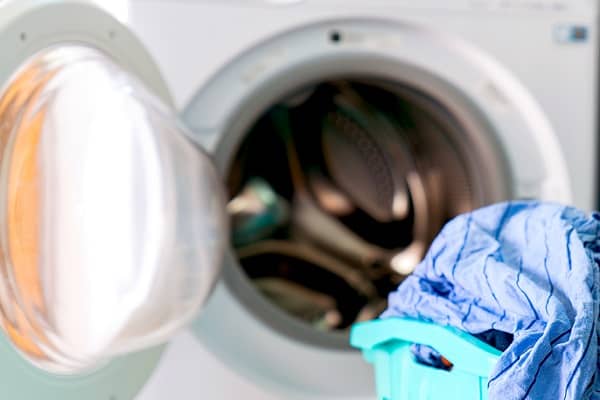By: Eric Reyes
About the Author:
Eric Reyes is a passionate thought leader having been featured in 50 distinguished online and offline platforms. His passion and knowledge in Finance and Business made him a sought after contributor providing valuable insights to his readers. You can find him reading a book and discussing current events in his spare time.
Disinfecting clothes might not normally come to mind when you think of laundry duty, but it can prevent illness and keep you feeling well! In fact, keeping your clothing clean and hygienic can help reduce allergens and other illness-causing agents, and remove excess dirt and oil. Keep reading to find useful resources on keeping your clothing squeaky clean!
- Always use the sanitize cycle. When you press the “sanitize” button on your washer, your clothing is washed at extra hot temperatures. This process can kill most of the remaining bacteria on your clothes. Keep in mind, frequent hot laundry cycles can get pricey.
- Laundry sanitizer. This step almost seems obvious, but laundry sanitizer can be ordered on Amazon or picked up at your local grocery. Sanitizer gets your clothes super clean while allowing you to wash at temperatures more appropriate for the clothing material. For example, if your dark wash jeans require a cold wash, laundry sanitizer might be for you.
- Hydrogen Peroxide. Commonly used to disinfect simple cuts or scrapes, hydrogen peroxide can serve a household purpose as well. Adding a cup of hydrogen peroxide to a load of white clothing adds that extra sanitizing boost. Hydrogen peroxide can be found at most pharmacies for an affordable price.
- Pine Oil. Toss in a cup of pine oil to any large load of laundry and you’ll see disinfected clothes as a result! That being said, if you don’t love the smell of pine, it may take a couple of washes to get rid of the smell.
- Essential Oils- If you’re looking for more natural, antiseptic options, essential oils may be for you! These days, essential oils like thyme oil can be found at most grocery stores. Use lavender essential oil to kill bacteria on your favorite T-shirt and toss in the thyme to get rid of MRSA and E.coli.
- Borax. Probably the most classic of the disinfectants, Borax can be added to any warm or hot wash. A half cup of Borax will dissolve and treat your clothing while it’s washing.
- White vinegar. Sick of using bleach or don’t want to damage non-white clothing? A half cup of white vinegar to any load of laundry can make a world of difference. For smelly gym clothes, white vinegar can deodorize the fabric, along with brightening colors.
While it might seem trivial, disinfecting laundry can really pay off. Some germs and other harmful pathogens that the disinfection process can kill include:
- COVID-19
- MRSA
- coli
- Adenovirus
- Hepatitis B
- Scabies
It is especially important for those in the medical field to be aware of the importance of laundry disinfection. Textiles used in hospitals, clinics, and doctor’s offices can easily become contaminated by different types of bodily fluids. Patients may leave blood, urine, vomit, feces, and saliva behind, making it vital to get linens properly disinfected before it comes into contact with another patient or staff member.
Also read: 10 Things To Do Before Opening A Laundry Shop Business
Medical laundry facilities use extremely hot water to kill any pathogens, germs, or other microorganisms that have remained on the textile. Used fabrics are submerged in water to dilute any stains or clear signs of a biohazard. Chlorine bleach is always used in these settings to disinfect and textiles are washed for a minimum of 25 minutes.
An acid is usually added to the load during the washing process to cancel out alkalinity in the water or soap. Alkalinity in the water, detergent, or other laundry additives may encourage the spread of pathogens that can be passed skin to skin. This can be replicated by using the white vinegar technique at home to give your clothes an extra boost of cleanness.
If you choose to use dry cleaning to remove any soiling from your clothes, note that it’s not very effective at getting rid of any germs or bacteria. Make sure your dry cleaner uses a heat press to maximize germ killing efficiency. Otherwise, you can purchase a small steamer to use at home to press your clothes and heat up any lingering pathogens.





